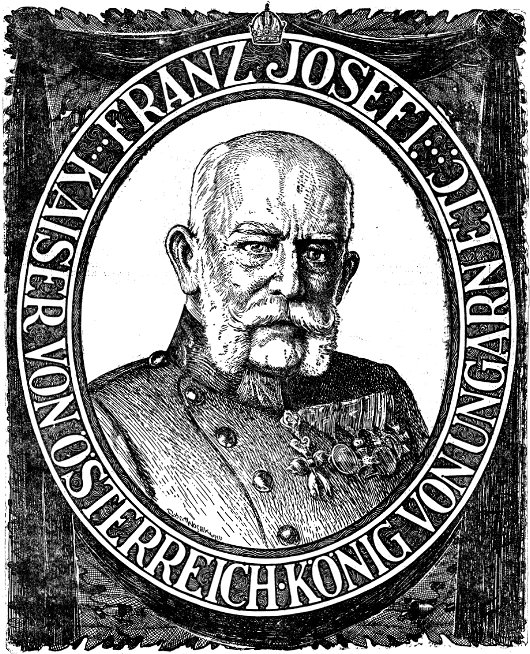Monarchy
About Andrew Cusack
 Writer, web designer, etc.; born in New York; educated in Argentina, Scotland, and South Africa; now based in London.
Writer, web designer, etc.; born in New York; educated in Argentina, Scotland, and South Africa; now based in London. read more
News
Blogs
Reviews & Periodicals
Arts & Design
World
France
Mitteleuropa
Knickerbockers
Argentina
The Levant
Africa
Cape of Good Hope
Netherlands
Scandinavia
Québec
India
Muscovy
Germany
Academica
The Highest Order in the Land
The Most Ancient and Most Noble Order of the Thistle
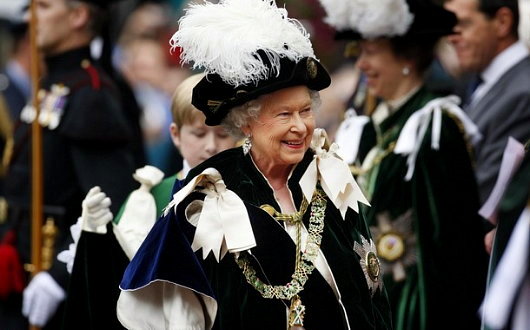
In 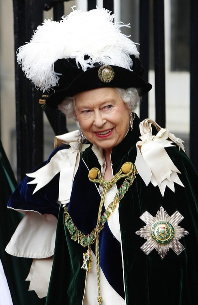 accordance with tradition, knights are appointed to the Order of the Thistle on the feast of Scotland’s patron saint, the Apostle Andrew, but they are not formally installed until the following summer when the Queen is in residence at the Palace of Holyroodhouse. And so this past July, the ‘Thistle Service’ took place at St. Giles’, the High Kirk of Edinburgh, and two new knights were inducted into Scotland’s highest honour and most exalted order of chivalry.
accordance with tradition, knights are appointed to the Order of the Thistle on the feast of Scotland’s patron saint, the Apostle Andrew, but they are not formally installed until the following summer when the Queen is in residence at the Palace of Holyroodhouse. And so this past July, the ‘Thistle Service’ took place at St. Giles’, the High Kirk of Edinburgh, and two new knights were inducted into Scotland’s highest honour and most exalted order of chivalry.
The knights, dames, and officers, dressed in their flowing velvet mantles of green along with their hats and collars, gather across Parliament Square in the Library of the Society of Writers to Her Majesty’s Signet (Scotland’s professional body of solicitors), part of the Parliament House complex that long ago housed the kingdom’s legislature, and is now home to her courts. In Parliament Square itself, the Royal Company of Archers (the Queen’s Body Guard for Scotland) forms a guard of honour and is accompanied by the band of the Royal Regiment of Scotland. (more…)
Titles in Afrikaans
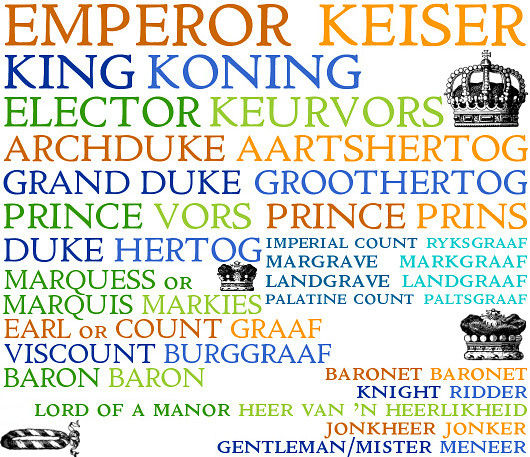
ROYAL, NOBLE, AND common titles in Afrikaans are, like most of the language, descended from Dutch antecedents which, in turn, come from German. The Cape knew not the Kingdom of the Netherlands, which was established after the Dutch relinquished the colony, but was founded as an outlet of the Dutch East India Company (or V.O.C., to give its Dutch acronym). After a brief period of British occupation, Dutch dominion over the Cape returned during the Batavian Republic before finally being seized by the British in 1806 and erected as a British colony in 1814. When the Union of South Africa was created in 1910, the country had its first king, George V, though the sovereign was generally only referred to as ‘King of South Africa’ from 1927 onwards.
The country has had no emperors, though some like to attribute that title to Shaka, the greatest King of the Zulus. Typically, however, he is known as king (as in King Shaka International Airport, Durban’s brand new landing-place). South Africa’s royalty have tended to be either native (like Prince Nelson Rolihlahla Mandela) or German (like Prince Hubertus of Prussia, d. 1950, and a few Blüchers, etc.). (more…)
Hapsburg Hebraica
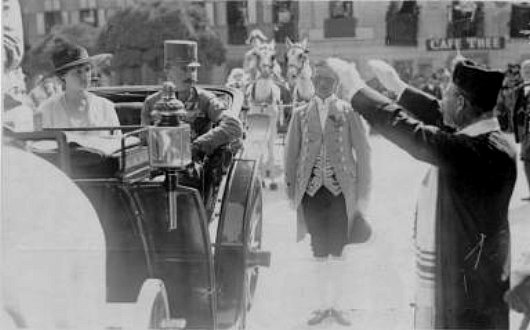
After the passing of the Hapsburg empire, which had been so protective of its Jewish subjects (especially compared to the regimes which succeeded it), numerous prominent Jews were received into the Catholic faith, perhaps having come to a full appreciation of precisely what they had lost. The subject of “Literary Jewish Converts to Christianity in Interwar Hungary” is worthy of further investigation (some graduate student should write a dissertation on just such a matter). I am no longer surprised when, in my researches, I come across yet another fascinating Hungarian Jew — be he a writer, playwright, poet, or patron — and discover, usually buried in some footnote, that he died a good Catholic.
The Would-Be King of New Zealand
Brigadier the Right Honourable Sir Bernard Fergusson,
Baron Ballantrae, KT, GCMG, GCVO, DSO, OBE
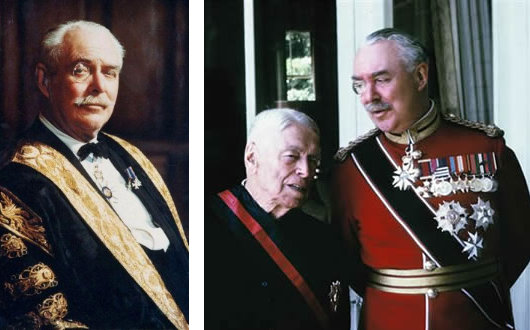
Left, Lord Ballantrae in his robes of office as Chancellor of the University of St Andrews; Right, as Governor-General of New Zealand with former Prime Minister Sir Walter Nash.
Over at Curated Secrets, Stephen Klimczuk takes a brief wander through Clubland, mentioning the illustrious Bernard Fergusson, who was known for “the skill with which he could toss his monocle in the air and catch it in his eye”. Stephen’s co-author on Secret Places, Hidden Sanctuaries, the Much Hon. Laird of Craiggenmaddie, chimes in on the commentbox, bringing to light that “when he was serving under Orde Wingate with the Chindits in Burma, among the supplies dropped by the RAF to those doughty warriors was a supply of monocles for Fergusson, since the damage/loss rate was so high in the jungle.”
Fergusson has always fascinated me, not only because he was the Chancellor of my university, but also because he has the best claim to the throne of New Zealand should the Land of the Long White Cloud ever decide to dispense with the House of Windsor. Lord Ballantrae (as Fergusson was ennobled) served as Governor-General of New Zealand, his own father served as Governor-General of New Zealand, and both his grandfathers served as Governor of New Zealand before the antipodean kingdom became a dominion. Rather appropriately, his son and heir is currently serving as Her Majesty’s High Commissioner to New Zealand, which is now the highest office of the British government in those islands.
Stephen mentions other fun stories of Clubland, such as the waggish response of the dinner guest who was kept waiting for Hermann Goering at one club before the war: “‘I have been shooting,’ said Goering. ‘Animals, I hope?’ was the quite reasonable question in response.”
Argentines Recall Blessed Emperor

An Argentine correspondent informs us that the Holy Sacrifice of the Mass was offered on October 28th at the Church of St. Boniface, the German-speaking parish of the Archdiocese of Buenos Aires, to commemorate the fifth anniversary of the beatification of Blessed Charles, Emperor of Austria and Apostolic King of Hungary. The mass was organized by Viscountess Huges Stier de Saint Jean (née Princess Isabelle Auersperg-Breunner), whose mother was a descendant of the Emperor Franz Joseph through his daughter Valerie. The Mass was offered in Spanish and German, with the prayers of intention read in those languages as well as Hungarian, Slovak, Ukrainian, Croatian, and Italian.
Category: Charles of Austria
Opening the Riksdag
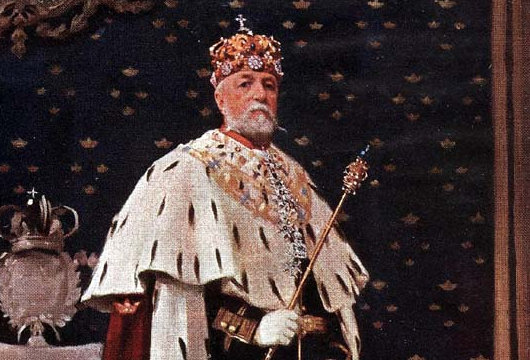
Ek probeer om Sweeds te leer, om my skamele kennis van wêreldtale te verhoog. I’ve also taught the English word ‘purgatory’ to a Finnish friend of mine, who happily reports back that she recently saw the word used on an episode of “South Park” and was glad to already be aware of it. In the meantime, I stumbled upon these photographs of Oscar II (by the Grace of God, King of Sweden, the Goths, and the Wends, erstwhile King of Norway) opening the Riksdag, Sweden’s parliament. You would think reading Kristin Lavransdatter and watching “Max Manus” would get me into a Norwegian frame of mind (and they do!) but all of Scandinavia is of interest to me. (more…)
Oranje in New York
The Prince & Princess of Orange Celebrate 400 Years of the Hudson
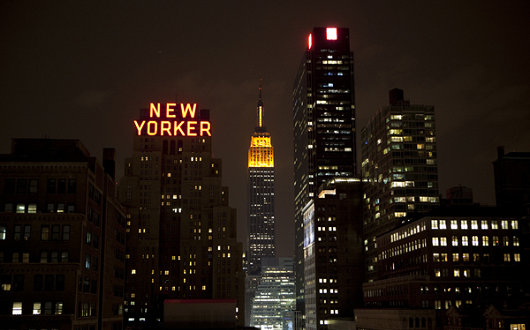
THE CONNECTIONS BETWEEN New York and the Netherlands go back far; back to the very beginning indeed, to 1609 when Henry Hudson, in the service of the Dutch, first set eyes on the greatest harbour of the Atlantic seaboard. The four-hundredth anniversary of that event brought the Prince and Princess of Orange, the heirs to the Dutch throne over to old New Amsterdam for the culmination of the year’s quadricentenary celebrations.
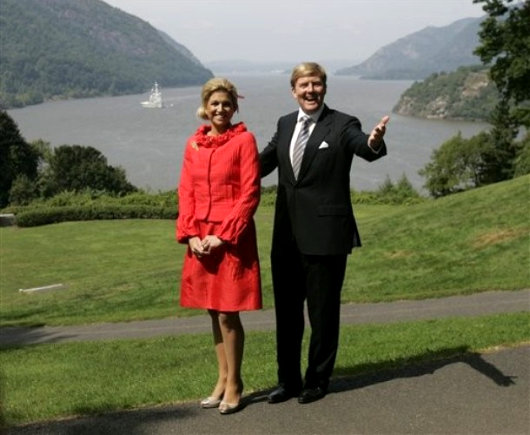
After their arrival in the Empire State, Prince Willem-Alexander and Princess Maxima sped straight up the Hudson Valley to West Point, the pearl of the river. The Kingdom of the Netherlands and the United States are official military allies, with at least 1,770 Dutch soldiers serving in Afghanistan, plus an undisclosed number of special forces from the Korps Commandotroepen. (more…)
A Sad Day in Pretoria
The Proclamation of the Republic and the End of the South African Monarchy
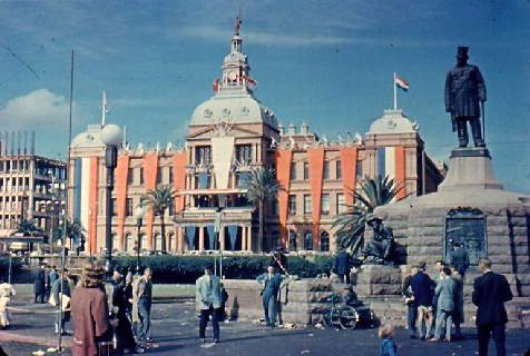
“For every monarchy overthrown, the sky becomes less brilliant, because it loses a star,” wrote Anatole France. “A republic is ugliness set free.” South Africa’s history betrays a long struggle between monarchy and republic, most typified in the horrendous Boer War between the British Empire and the two Afrikaner republics. Many of the Boers were shocked and surprised by the leniency of the British following their surrender to the forces of the Empire, given the brutality inflicted upon the Afrikaner people by the British during the war. Their old republics became colonies but were granted the right to rule themselves within just a few years of that bitter conflict’s end. In 1910, all four British colonies — the Cape, Natal, the Orange River Colony, and the Transvaal — were consolidated in the Union of South Africa, a self-governing dominion which became an independent kingdom after the Statue of Westminster was passed in 1931.
Yet Britain’s munificence towards the defeated people could not assuage the cold-hearted bitterness formed by their cruelty during the Boer War. The term “concentration camp” first arrived in the English language in South Africa, but it was the speakers of Dutch and Afrikaans who were interned in the camps and left without rudimentary medicine or food. The photos of the interned tell the tale better than any words. When the National Party won an outright majority of seats in the South African parliament in 1948, the republican-oriented party began a gradual process of loosening the country’s ties with Great Britain. Just a year later, the Citizenship Act was passed providing for South African citizenship apart from British subjecthood. Previously, any British subject living in South Africa would be considered ‘South African’ after two years of residence. Now, it would take five years of residence for a British subject to gain South African citizenship.
In 1950, the right of appeal to the Privy Council was abolished, and the Supreme Court in Bloemfontein became the court of last instance for the country. In 1957, that court asserted the sovereignty of the Parliament of South Africa (consisting of the Crown, Senate, and House of Assembly) in its ruling over the Collins v. Donges, Minister of the Interior case. That same year the Union Jack ceased to be an official national flag alongside the oranje-blanje-blou, and “Die Stem van Suid-Afrika” was given sole official status as the national anthem; thenceforth the Union Jack and “God Save the Queen” would only be used on specifically British or Commonwealth occasions. The old Royal Navy base at Simon’s Town, founded 1806, was handed over to the South African Navy, though the Royal Navy had continued use of it under a bilateral accord. The creeping republicanism manifested itself in smaller ways too, as with “OFFICIAL” replacing the designation “O.H.M.S.” (On Her Majesty’s Service) on government correspondence. (more…)
The Emperor in British Columbia
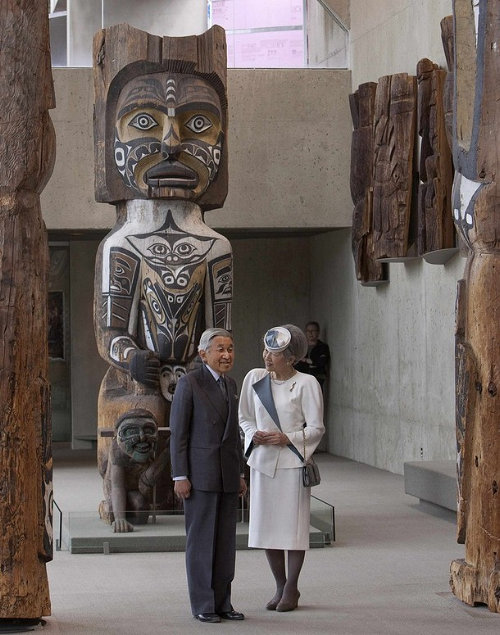
The Emperor & Empress of Japan in the Museum of Anthropology in Vancouver, on a recent visit to British Columbia.
Leve de Koningin!
“Hoera! Hoera! Hoera!” — The Third Tuesday in September Beholds the State Opening of the States-General of the Netherlands
Previously: Prinsjesdag
The Principality of South Africa
“… or some such thing.”
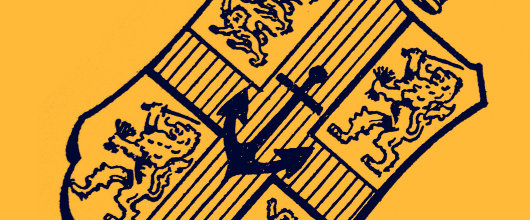
History has shown that good ideas often come from the humblest of sources. One such example, though regrettably one of a suggestion not put into practice, was a proposal submitted by D. M. Perceval, the humble clerk of the Advisory Council of the Cape of Good Hope colony in 1827 to his higher-ups in the Colonial Office in London. Perceval wrote to request an official seal for the British colony at the end of Africa, but he went a step further with his fairly normal request, extraordinarily suggesting that “the opportunity might be taken to erect [the Cape of Good Hope] into the Principality of South Africa, or some such thing, for the present name is really too absurd for the whole country.”
The title “Prince of South Africa” would have been part of the British Crown, and presumably available as a courtesy title for offspring, just as the eldest son is often (such as now) created Prince of Wales. Would the second son then be “Prince of South Africa”, or would the title stay with the Sovereign? “By the grace of God, King of Great Britain & Ireland, Emperor of India, Prince of South Africa, &c.” It does have a nice ring to it. (more…)
Of tribes and traditions
In tribal Africa, Ghaddafi expounds traditional government; Meanwhile ethnic Romanians vote to be ruled by their German neighbours.
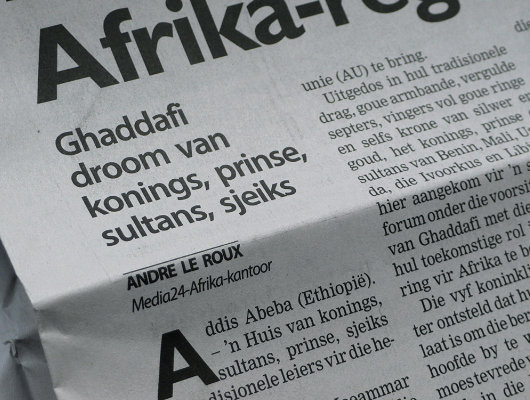
«Ghaddafi dreams of kings, princes, sultans, sheiks»
reports the Afrikaans newspaper Die Burger.
ONE OF THE LESS-REPORTED aspects of the selection of Col. Moammar al-Ghaddafi, the tent-dwelling Libyan leader and notorious eccentric, as Chairman of the African Union was his proposal that an upper house of “kings, princes, sultans, sheiks, and other traditional leaders” be added to the Pan-African Parliament. Col. Ghaddafi has been forthright in his condemnation of democracy as ill-suited to the African continent. “We don’t have any political structures [in Africa], our structures are social,” he explained to the press. Africa is essentially tribal, the argument goes, and as such multi-party democracy always develops along tribal lines, which eventually leads to tribal conflict and warfare. “That is what has led to bloodshed,” the AU chairman posited, citing the recent example of the Kenyan elections.
Europe, of course, solved the matter of tribal difficulties by brutally uprooting long-established peoples from their native lands after the Second World War and transferring them to jurisdictions in which they would ostensibly be part, not only of the majority, but of theoretically “national” states. Cities with centuries of Polish history became Soviet, towns as German as sauerkraut became Polish, and so on and so forth. Sometimes the undesired populations of multi-ethnic places were cruelly murdered, as recent revelations from the police in Bohemia have shown.
Still, remnants of the old cosmopolitan order remain. (more…)
A Good Day in Cape Town
The South African Royal Family’s 1947 visit to “Die Moederstad”
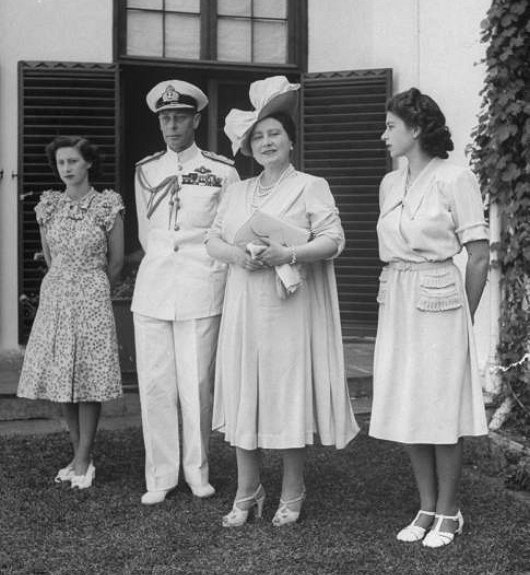
SOUTH AFRICA IS a nation that took a long time birthing, from the first steps van Riebeeck took on the sands of Table Bay in 1652, through the tumult of the native wars, the tremendous conflict between Briton & Boer, and ultimately what was hoped would be the final reconciliation in Union of South Africa — 1910. In that year, young Prince Albert of York & of Saxe-Coburg-Gotha was just fifteen years of age, and South Africa became a dominion just weeks after his father became King George V.
Albert was the second son of a second son, so at the time of his birth (and for most of his early life) it was never expected that he would one day be King of Great Britain, Emperor of India. It was his brother’s abdication that thrust poor Bertie, as he was always known to his loved ones, upon the throne imperial. It was a cold December day in 1936 that the heralds of the Court of St. James proclaimed him George VI.
By his nature, the King was a quiet and reserved man, partly because of the stammer that impeded his speech. George VI was happiest among his family, and they accompanied him in 1947 on a long voyage aboard HMS Vanguard, to his far-off kingdom on the other side of the world, where the two oceans meet. It was the first time a reigning monarch has set foot on South African soil, and Capetonians waited in earnest anticipation to see their sovereign. How appropriate that this happy city — moederstad, or “mother-city”, of all South Africa — would be the first to receive him. (more…)
The Young Emperor
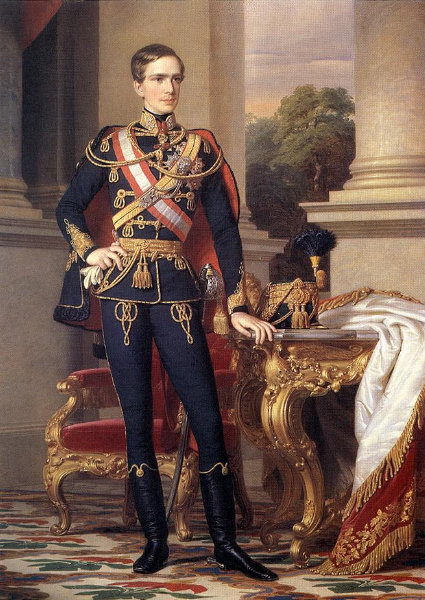
A reader notes in correspondence that Franz Joseph was not always old — though the popular conception certainly is of the Emperor in his later years. Here is the young Franz Joseph (or Ferenc József), just five years after he became Emperor of Austria, King of Hungary, Bohemia, &c. The Emperor became so at such a young age because his father, Ferdinand I, abdicated after the revolts of 1848.
This portrait is by the Hungarian painter Miklós Barabás, who also completed portraits of the composer Franz Liszt, the novelist Baron József Eötvös de Vásárosnamény, William Tierney Clark, the Bristol engineer responsible for Budapest’s famous Chain Bridge, and many, many others.
The Queen at the Armory
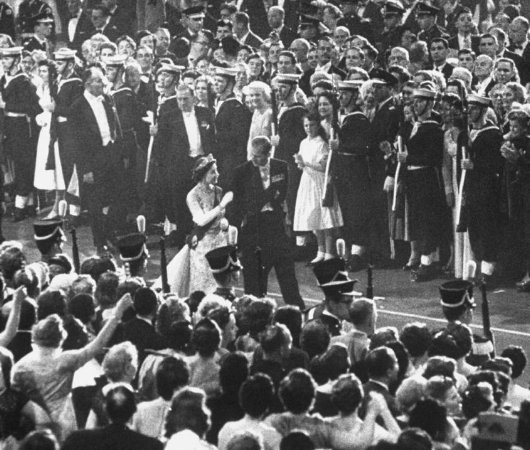
Queen Elizabeth II & the Duke of Edinburgh attend a ball in their honour at the Seventh Regiment Armory in New York; October, 1957.
Praying with the Kaisers
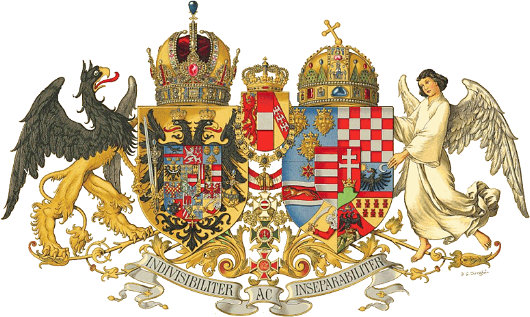
by JOHN ZMIRAK
INSIDECATHOLIC.COM
As I’m writing this column at the tail end of my first trip to Vienna, some of you who’ve read me before might expect a bittersweet love note to the Habsburgs — a tear-stained column that splutters about Blessed Karl and “good Kaiser Franz Josef,” calls this a “pilgrimage” like my 2008 trip to the Vatican, and celebrates the dynasty that for centuries, with almost perfect consistency, upheld the material interests and political teachings of the Church, until by 1914 it was the only important government in the world on which the embattled Pope Pius X could rely for solid support. Then I’d rant for a while about how the Empire was purposely targeted by the messianic maniac Woodrow Wilson, whose Social Gospel was the prototype for the poison that drips today from the White House onto the dome of Notre Dame.
And you would be right. That’s exactly what I plan to say — so dyed-in-the-wool Americanists who regard the whole of the Catholic political past as a dark prelude to the blazing sun that was John Courtenay Murray (or John F. Kennedy) might as well close their eyes for the next 1,500 words — as they have to the past 1,500 years.
But as I bang that kettle drum again, I want to set two scenes, one from a fine and underrated movie, the other from my visit. The powerful historical drama “Sunshine” (1999) stars Ralph Fiennes as three successive members of a prosperous Jewish family in Habsburg Budapest. The film was so ambitious as to try portraying the broad sweep of historical change — and, as a result, it was not especially popular. What historical dramas we moderns tend to like are confined to the tale of a single hero, and how he wreaks vengeance on the villains with English accents who outraged the woman he loved. “Sunshine”, on the other hand, tells the vivid story of the degeneration of European civilization in the course of a mere 40 years. The Sonnenschein family are the witnesses, and the victims, as the creaky multinational monarchy ruled by the tolerant, devoutly Catholic Habsburgs gives way through reckless war to a series of political fanaticisms — all of them driven by some version of Collectivism, which the great Austrian Catholic political philosopher Erik von Kuenhelt-Leddihn calls “the ideology of the Herd.”
From a dynasty that claimed its legitimacy as the representative of divine authority at the apex of a great, interconnected pyramid of Being in which the lowliest Croatian fisherman (like my grandpa) had liberties guaranteed by the same Christian God who legitimated the Kaiser’s throne, Central Europe fell prey to one strain after another of groupthink under arms: From the Red Terror imposed by Hungarian Bolsheviks who loved only members of a given social class, to radical Hungarian nationalists who loved only conformist members of their tribe, to Nazi collaborationists who wouldn’t settle for assimilating Jews but wished to kill them, finally to Stalinist stooges who ended up reviving tribal anti-Semitism. The exhaustion at the film’s end is palpable: In the same amount of time that separates us today from President Lyndon Johnson, the peoples of Central Europe went from the kindly Kaiser Franz Josef through Adolf Hitler to Josef Stalin. Call it Progress.
Apart from a heavily bureaucratic empire that spun its wheels preventing its dozens of ethnic minorities from cleansing each other’s villages, what was lost with the fall of the Austro-Hungarian monarchy? For one thing, we lost the last political link Western Christendom had with the heritage of the Holy Roman Empire. (Its crown stands today in the Imperial Treasury at the Hofburg, and for me it’s a civic relic.) Charlemagne’s co-creation with the pope of his day, that Empire had symbolized a number of principles we could do well remembering today: Principally, the Empire (and the other Christian monarchies that once acknowledged its authority) represented the lay counterpart to the papacy, a tangible sign that the State’s authority came not from mere popular opinion, or the whims of tyrants, but an unchangeable order of Being, rooted in divine revelation and natural law.
The job of protecting the liberty of the Church and enforcing (yes, enforcing) that Law fell not to the clergy but to laymen. The clergy were not a political party or a pressure group — but a separate Estate that often as not served as a counterbalance to the authority of the monarchy. No monarch was absolute under this system, but held his rights in tension with the traditional privileges of nobles, clergy, the citizens of free towns, and serfs who were guaranteed the security of their land. Until the Reformation destroyed the Church’s power to resist the whims of kings — who suddenly had the option of pulling their nation out of communion with the pope — no king would have had the power or authority to rule with anything like the monarchical power of a U.S. president. Of course, no medieval monarch wielded 25-40 percent of his subjects’ wealth, or had the power to draft their children for foreign wars. It took the rise of democratic legal theory, as Hans Herman Hoppe has pointed out, to convince people that the State was really just an extension of themselves: a nice way to coax folks into allowing the State ever increasing dominance over their lives.
A Christian monarchy, whatever its flaws, was at least constrained in its abuses of power by certain fundamental principles of natural and canon law; when these were violated, as often they were, the abuse was clear to all, and the monarchy often suffered. In extreme cases, kings could be deposed. Today, by contrast, priests in Germany receive their salaries from the State, collected in taxes from citizens who check the “Catholic” box. So much for the independence of the clergy.
The House of Austria ruled the last regime in Europe that bound itself by such traditional strictures, which took for granted that its family and social policies must pass muster in the Vatican. By contrast, in the racially segregated America of 1914, eugenicists led by Margaret Sanger were already gearing up to impose mandatory sterilization in a dozen U.S. states (as they would succeed in doing by 1930), while Prohibitionist clergymen and Klansmen (they worked together on this) were getting ready to close all the bars. As historian Richard Gamble has written, in 1914 the United States was the most “progressive” and secular government in the world — and by 1918, it was one of the most conservative. We didn’t shift; the spectrum did.
Dismantled by angry nationalists who set up tiny and often intolerant regimes that couldn’t defend themselves, nearly every inch of Franz-Josef’s realm would fall first into the hands of Adolf Hitler, then those of Josef Stalin. Today, these realms are largely (not wholly) secularized, exhausted perhaps by the enervating and brutal history they have suffered, interested largely in the calm and meaningless comfort offered by modern capitalism, rendered safer and even duller by the buffer of socialist insurance. The peoples who once thrilled to the agonies and ecstasies carved into the stone churches here in Vienna can now barely rouse the energy to reproduce themselves. Make war? Making love seems barely worth the tussle or the nappies. Over in America, we’re equally in love with peace and comfort — although we’ve a slightly higher (market-driven?) tolerance for risk, and hence a higher birthrate. For the moment.
Speaking of children brings me to the most haunting image I will take away from Austria. I spent a whole afternoon exploring the most beautiful Catholic church I have ever seen — including those in Rome — the Steinhof, built by Jugendstil architect Otto Wagner and designed by Kolomon Moser. An exquisite balance of modern, almost Art-Deco elements with the classical traditions of church architecture, it seems to me clear evidence that we could have built reverent modern places of worship, ones that don’t simply ape the past. And we still can. A little too modern for Kaiser Franz, the place was funded, the kindly tour guide told me in broken English, by the Viennese bourgeoisie. (Since my family only recently clawed its way into that social class, I felt a little surge of pride.) Apart from the stunning sanctuary, the most impressive element in the church is the series of stained-glass windows depicting the seven Spiritual and the seven Corporal Works of Mercy — each with a saint who embodied a given work. All this was especially moving given the function of the Steinhof, which served and serves as the chapel of Vienna’s mental hospital. (It wasn’t so easy getting a tour!) The church was made exquisite, the guide explained, intentionally to remind the patients that their society hadn’t abandoned them. Moser does more than Sig Freud can to reconcile God’s ways to man.
We see in the chapel the spirit of Franz Josef’s Austria, the pre-modern mythos that grants man a sacred place in a universe where he was created a little lower than the angels — and an emperor stands only in a different spot, with heavier burdens facing a harsher judgment than his subjects. No wonder Franz Josef slept on a narrow cot in an apartment that wouldn’t pass muster on New York’s Park Avenue, rose at 4 a.m. to work, and granted an audience to any subject who requested it. He knew that he faced a Judge who isn’t impressed by crowns.
As we left the church, I asked the guide about a plaque I’d seen but couldn’t quite ken, and her face grew suddenly solemn. “That is the next part of the tour.” She explained to me and the group the purpose of the Spiegelgrund Memorial. It stands in the part of the hospital once reserved for what we’d call “exceptional children,” those with mental or physical handicaps. While Austria was a Christian monarchy, such children were taught to busy themselves with crafts and educated as widely as their handicaps permitted. The soul of each, as Franz Josef would freely have admitted, was equal to the emperor’s. But in 1939, Austria didn’t have an emperor anymore. It dwelt under the democratically elected, hugely popular leader of a regime that justly called itself “socialist.” The ethos that prevailed was a weird mix of romanticism and cold utilitarian calculation, one which shouldn’t be too unfamiliar to us. It worried about the suffering of lebensunwertes Leben, or “life unworthy of life”–a phrase we might as well revive in our democratic country that aborts 90 percent of Down’s Syndrome children diagnosed in utero. So the Spiegelgrund was transformed from a rehabilitation center to one that specialized in experimentation. As the Holocaust memorial site Nizkor documents:
In Nazi Austria, parents were encouraged to leave their disabled children in the care of people like [Spiegelgrund director] Dr. Heinrich Gross. If the youngsters had been born with defects, wet their beds, or were deemed unsociable, the neurobiologist killed them and removed their brains for examination. …
Children were killed because they stuttered, had a harelip, had eyes too far apart. They died by injection or were left outdoors to freeze or were simply starved.
Dr. Gross saved the children’s brains for “research” (not on stem cells, we must hope). All this, a few hundred feet from the windows depicting the Works of Mercy. Of course, they’d been replaced by the works of Modernity.
We’re much more civilized about this sort of thing nowadays, as the guests at Dr. George Tiller’s secular canonization can testify. In true American fashion, our genocide is libertarian and voluntarist, enacted for profit and covered by insurance.
I will think of the children of the Spiegelgrund tomorrow, as I spend the morning in the Kapuzinkirche, where the Habsburg emperors are buried — and the Fraternity of St. Peter say a daily Latin Mass. As I pray the canon my ancestors prayed and venerate the emperors they revered, I will beg the good Lord for some respite from all the Progress we’ve enjoyed.
Blessed Karl I, ora pro nobis.
[Dr. John Zmirak‘s column appears every week at InsideCatholic.com.]
Mass for Prince Pedro Luiz
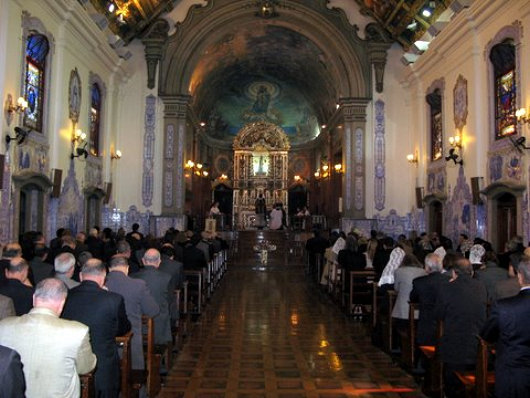
The “week’s mind” Mass, or Mass of seven days, was held a week after the death of Dom Pedro Luiz of Orleans-Braganza in São Paulo, Brazil on June 8, 2009. The Mass was offered according to the extraordinary (or Tridentine) form of the Latin rite. The members of the Imperial Family of Brazil were in attendence. (more…)
On the Death of Prince Pedro Luiz
A STATEMENT FROM D. LUIZ DE ORLEANS E BRAGAÇA
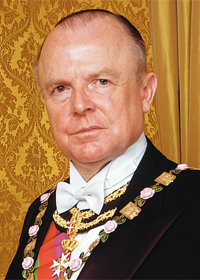 PIERCED WITH SORROW, I fulfill my duty as Head of the Imperial House of Brazil to communicate the disappearance of my beloved nephew and much-regretted D. Pedro Luiz de Orleans e Bragança, in the fateful May 31 ocean crash of the Air France Rio-Paris flight.
PIERCED WITH SORROW, I fulfill my duty as Head of the Imperial House of Brazil to communicate the disappearance of my beloved nephew and much-regretted D. Pedro Luiz de Orleans e Bragança, in the fateful May 31 ocean crash of the Air France Rio-Paris flight.
Given the harrowing pain of his parents, D. Antonio and D. Christine, his brothers, D. Amélia, D. Rafael and D. Maria Gabriela, and my dear Mother, D. Maria, I turn to them with special solicitude and affection. And with the whole Imperial Family, I turn with the same solicitude and affection to all those who have lost their loved ones in the crash. To all these families – so very special to Brazil – the Imperial Family extends its feelings and asks God for the eternal repose of each and every victim.
Over the last few days, D. Pedro Luiz’s parents and I have received so many manifestations of genuine mourning for the tragic event that I can only see these events as a living and authentic expression of the sense of family and ties of affection that unites the Imperial Family and all Brazilians, whether monarchist or not.
D. Pedro Luiz – the fourth in the line of dynastic succession – was a young Prince who rose in his generation as a promise, having attracted the interest and attention of many for his pleasant ways, undeniable qualities and for the traditions he represented.
As a result of his excellent upbringing and fine sense of duty, instilled by his parents, after having graduated in Business Administration at IBMEC in Rio de Janeiro, and his post-graduation at FGV, he took the initial steps of a promising career at BNP Paribas in Luxembourg, and showed great concern and commitment to show foreigners the great potential of our country.
But his presence was especially dear among those who believe the monarchy is the solution for today’s Brazil.
D. Pedro Luiz was honorary president of Monarchist Youth and participated in noteworthy activities and events to the benefit of the monarchic ideal, often in the company of his parents. He represented the Imperial House on occasion, and I am especially pleased to recall his presence in Portugal for the celebration of the 500th anniversary of the discovery of Brazil.
While this is a moment of apprehension and sadness, it can not be devoid of hope. Our hopes turn particularly to D. Pedro Luiz’s brother, D. Rafael – to whom I wish courage and determination in the face of misfortune, and whom I urge to be a true example of a Prince to his generation, turned to the good of Brazil and to setting an example of Christian virtues.
To close this painful communiqué, I turn my eyes to Our Lady Aparecida, Queen and Patroness of Brazil, Whom we beseech with confidence to receive D. Pedro Luiz in eternity. And I ask for special prayers for him, as well as for his parents, brothers and my dear mother, from all those who, in a spirit of faith, have supported the Imperial Family at this time of mourning.
São Paulo , June 5, 2009
Dom Luiz de Orleans e Bragança
Head of the Imperial House of Brazil
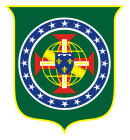
RIP: Dom Pedro Luís of Brazil
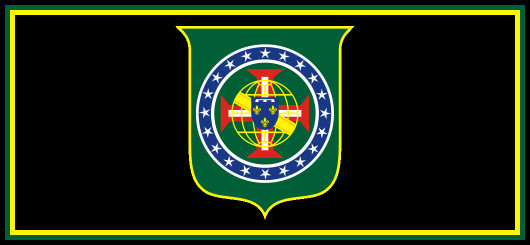
Dom PEDRO LUÍS MARIA JOSÉ MIGUEL
RAFAEL GABRIEL GONZAGA
de
ORLÉANS-BRAGANÇA
e
LIGNE
Prince of the Imperial House of Brazil
Son of H.I.H. Prince Antônio of Orléans-Braganza
&
H.H. Princess Christine of Ligne
Born 12 January 1983 in Rio de Janeiro.
Died 1 June 2009, on Air France Flight 447.
Until his early death, heir-presumptive to the Imperial throne of Brazil.
Requiem aeternam dona ei, Domine:
et lux perpetua luceat ei.
Requiescat in pace.
Amen.
Search
Instagram: @andcusack
Click here for my Instagram photos.Most Recent Posts
- Bicycle Rack April 29, 2024
- Burns Tower April 19, 2024
- Patrick in Parliament March 18, 2024
- Articles of Note: 13 March 2024 March 13, 2024
- Cambridge March 9, 2024
Most Recent Comments
Book Wishlist
Monthly Archives
Categories

